Easter Out of Season
“Conviviality: the word is born of the marriage of con and vivere, ‘with’ + ‘live.’ Quam ad convivendum? How can we beckon, hold, live with and for each other in the face of a death both present and foretold; how do so in the name of lives present, remembered or forgotten; how even to assert—as some glad, naked fools have done beneath the very gates of reasonable evidence—that such life is also both foretold and present? How would we conjugate such living, and in doing so, break other, fatal marriages: enchanted bonds of desire with disillusion, fantasy to futility? What might dissolve such antonymic cons? What calls us from tomb to dawn?”—William Ramp
Small Things Recollected
By William Ramp
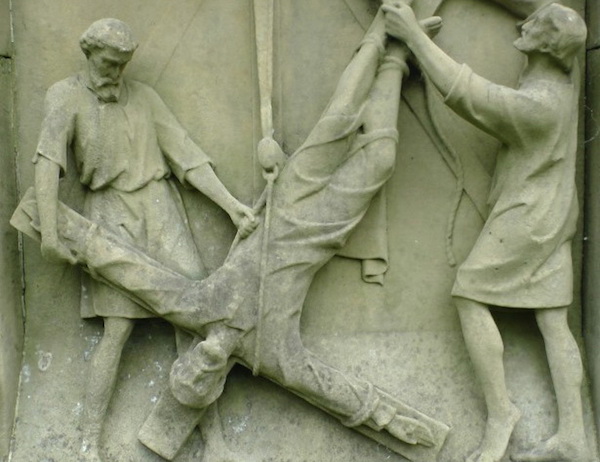
LETHBRIDGE Alberta, Canada—(Weekly Hubris)—4/20/2015—Over much of the past year, I’ve posted a series of meditations on the history and ecology of the North American plains. That series still lacks a concluding article, but conversation with my worthy editor is leading me to rethink it in terms of a much wider context; the survival not only of plains ecosystems but of the human species which reconceived and transformed them and the face of the whole earth. Writing that kind of conclusion will take some time, and so, in the interim, I will offer two other pieces that came to fruition alongside the Plains series.
The more time-sensitive of these is a reflection, through the lens of Easter, on the intersection of the mundane, the cosmic, and the horrific. It has some bearing on the forthcoming conclusion of that Plains series. I began it last year, and finished it at the end of this year’s Easter season, amidst a flurry of grim news reports. It appears here.
On reading it, some may wonder if I harbour religious beliefs or convictions. I’d reply that I am indeed a convict; convicted of adding, in my own way, at various times, to the grim ugliness I describe below. As for beliefs? To my mind, the matter is less about belief than story, and narrative possibility. It would be more proper to say that the Easter narrative holds me, often not in a comforting way, as I struggle to escape or deny its radical and unsettling implications.
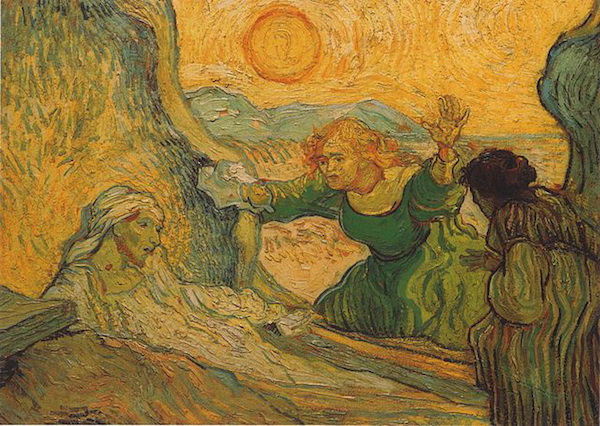
Last year, at the end of Lent, a friend sent me a link to a meditation by Nadia Bolz Weber on the raising of Lazarus. I skimmed it quickly: as always, there were other things to attend to, a day to get through, an accountable life to live. But something in it caught me and held on:
I can’t imagine Lazarus expected to be raised from the dead. So, when Jesus called his name and he walked from his own tomb, when his eyes opened, unexpectedly, I’m sure he didn’t know to shield them. I can’t help but wonder how much the transition from the deep darkness of a grave to the light of living day must have been painful. He, like his sisters, had to have been surprised by the suddenness of dawn.
Deskbound though I was, that passage sent me off in imagination toward different Easter visions; analogues in other orbits.
As with daydreams, one can get away with analogy. The medieval church wedded it to anagogy: rock-climbing for the cell-bound mystic. But can analogy’s unitive warmth flame forth as actuality? Could it live, or be lived? The African-American church’s resurrection of the Exodus story addressed that question, and burned it into the souls of King, Bonhoeffer, and uncounted ordinary folk.
But can it still, in this stalled and monetized universe?
With students in two of my courses over the past year, I’ve read Mark Fisher’s Capitalist Realism: Is There No Alternative? Fisher’s description of our quotidian lives is succinct, unsparing, and grim. Distraction, depression, resentment, anxiety, confusion; the conjoining of tension and Zombie repetition—these shades color narrative fragments of lives suspended between two poles. Around one, dance the sparkle-promise words: innovation, entrepreneurship, promotion; excellence, boldness, flexibility. Around the other trudge, chained and grim, markers of burden and limit: austerity, responsibility, rationalization, accountability, market dictates, necessary pain. Between them struts a ringmaster named creative destruction, tapping a whip against its boot.
Like filings to magnets, these two poles have attracted other descriptors. Leaders versus losers. Privilege versus precarity. Possession versus isolation. Fame versus invisibility. These oppositions seem no longer to contradict themselves, but politicians, administrators, and their consultants do, happily, repeatedly, shamelessly.
Market Stalinism, Fisher calls it; a world in which the obviously-impossible restricts admissible prospects to the hyper-production of the ever-new same-old. A world in which values become goals, or brand-images.
The world made of these words, and the acts they permit, is one in which gates and guards secure the elect while street vents and justice-industry barracks gather the lost. Grey desperation toils just a pay-period, accident, or eligibility rejection away from domestic catastrophe. Personal trainers and lifestyle gurus—our generation’s Horatio Algers—spin out branded soteriologies while paralysis haunts classrooms and bedsits and self-immolation stalks hallways. Start-up optimism blares contempt at weary retail associates and resumé-submitters seeking to negotiate an employee-free economy.
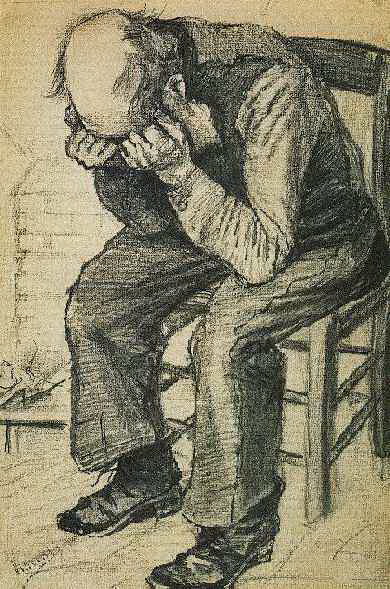
Here is a kingdom less peaceable than pacified, where adrenalized aggression circles impotent rage. Here, boredom lies down next to panic, exhaustion beside frenzy, and some narcissistic child shall seek to lead out its inhabitants to beat the bounds of war. Along the way, piece by piece, they discard faith in past economic verities, but cling to odd shreds of them because, amidst mountains of infinite and ungraspable possibility and depths of irrevocable loss, there seems little else with which to measure distance.
In a simulacrum of helpfulness to such pilgrims, more signs will be posted to indicate value-chain destinations and the metrics of approaching them. Social topography will be charted as a global positioning of targets, plans, brand strategies, and leverage. Wayside shrines to transformational change will continue to multiply like mushrooms, fed in darkness on redolant leavings of Harvard visionaries and fly-in, parachute-out consultants.
But transformation’s benefits lie ever beyond some precipitous curve where no guardrail averts the plunge of if-only’s and should-haves. Fearful, some manage a place aboard a train called the Stay Calm & Carry On (as ever) Express, stowing their Pandoras in a baggage-car named Needs to Work on Self.
A realm, in short, of dead living and living dead. What Good Friday entombs it? What Easter could raise it?
I don’t know. I dream that I enter a cave, but it’s empty. I back out, not seeing any one who sits by the rolled stone; not knowing where to look; not hearing an admonitory, “He is not here.” Discomfited, distracted, I fumble for individually-wrapped comforts or a postcard in the kiosk at the cemetery gate. Something for the moment, anyway.
Here, while mortgages hold or debt instalments exact, Jubilee’s trumpet wafts away on the wind.
Here, the regime of no-alternative dreams its own dream, rendering possibility away to camps of sustainable suspension, under the seal of . . . of what? Secrecy? Garrulous reiteration of common sense, a different and noisome silence? Will it persist until realism itself becomes impossible? Until the power which sorts deliverable sheep from low-return goats, which banishes commonalty and seats the “leadership team” at its right hand, flees a flooding throne?
Will any throne ever become a bench of mercy or an ark?
When, or if—at midnight, or some sudden dawn, through some crack in daily reality, the inconceivable manifests, and we are caught empty-handed, eyes burning, and awed . . .
What trumpet might sound? What wind carry its jazz, and to whose ears?

Right: Portrait of John Donne as he expected to appear when he rose from the grave at the Apocalypse.
In stubborn late-winter, another friend puts verse beside my name and (on prosaic Facebook), sends it, unexpected, across miles and years (back) to me:
At the round earth’s imagined corners blow
Your trumpets, angels, and arise, arise
From death, you numberless infinities
Of souls, and to your scattered bodies go;
All whom the flood did, and fire shall o’erthrow,
All whom war, dea[r]th, age, agues, tyrannies,
Despair, law, chance hath slain, and you, whose eyes
Shall behold God, and never taste death’s woe.
But let them sleep, Lord, and me mourn a space;
For, if above all these my sins abound,
‘Tis late to ask abundance of Thy grace,
When we are there. Here on this lowly ground,
Teach me how to repent, for that’s as good
As if Thou hadst seal’d my pardon with Thy blood.
Perhaps some Body already here collects us beyond and despite our knowledge, welding us one to one. Perhaps some wind gathers our bones before the amazed eyes of a new Ezekiel. Perhaps our hands, enfleshed and flexing, are not empty of implements of grace; perhaps we still have ears; perhaps our eyes, unshielded, already begin to register the painful brightness of annunciation?
But this year, at the end of Lent, thousands of Syrians crouched in places that travesty the phrase “refugee camp” and war has now followed them there. There, even there, barrel bombs shred children, and women die in childbirth for lack of the most basic care. In Mexico, 43 students are missing and presumed dead; their absence cries out to absent justice.
In Kenya, the day before Good Friday, 147 university students were shot in their classrooms; the targets of militants blinded by the fires of vengeance and certainty.
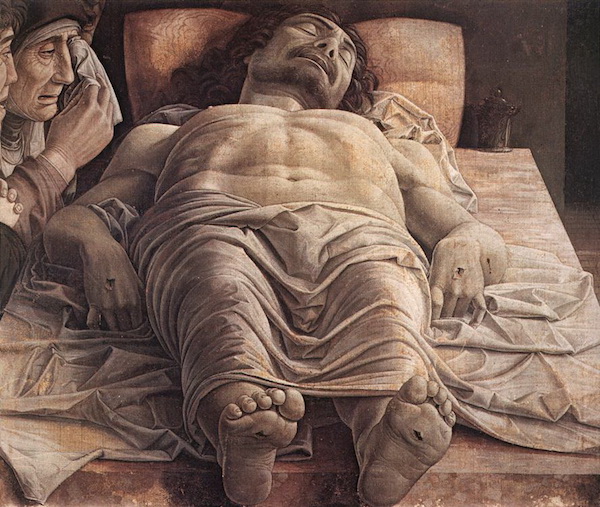
I saw pictures of those classrooms. I wrote this (on Facebook) in response, and in utter inadequacy:
I’m sorry to share these images, and uncertain about doing so.
Sorry because they are deeply offensive, especially on Easter morning. Perhaps the most offensive I’ve ever shared.
And uneasy because of the power of the camera to exploit and objectify.
I share them because I teach students, and these are students.
And because students’ bodies are so often targeted.
Whether it’s done by death squads, police, military, or mobs, and whether these entities serve corruption or purism, students are taken to signify the enemy because they signify the possibility of attention and vulnerability; of learning and being broken open; of a future that is not closed.
Attacks like these are how Good Friday gets carried forward, and carried forward. Even into Easter Sundays. On this Sunday (or Monday, depending on your time zone), hold students like these, living and dead, in your thoughts. Please.
In my own country, another student, her young face unshielded and eyes open like Lazarus’s falls backward, receiving in her person a different illumination: the disorienting flash, impact, and fierce pain of a tear gas canister fired point-blank. An annunciation of violence: no bright figure called her forth; no cross was traced on her brow. Disfigurement left a fiery signature.
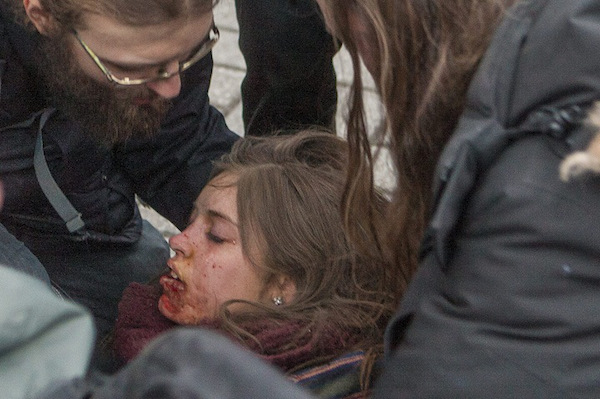
In California, this month, a 20-year-old African-American activist who tried to pull a fellow-protester away from police, goes to court, charged under a law originally intended for those who dragged her own people off to the lynching tree.
How dare one hope, in the face of these events and countless others like them, that some prodigal command might raise a modern Lazarus and bisect the course charted by actuaries of consumption and austerity, and strategists of endless war? How dare one suggest that tales and talismans and bones might yet take flesh, or that machines might embody loving grace? That analogies might live, and that un-tuned instruments, a slow and hesitant turn of dance, fumbled tools of conviviality, might yet knit us in some mad joy, into some new way of being?
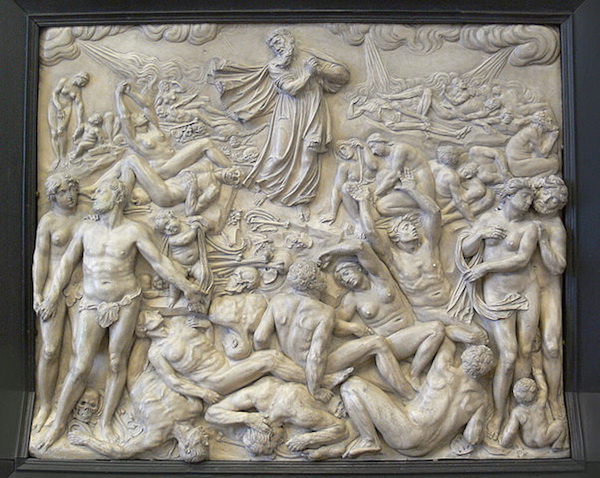
Conviviality: the word is born of the marriage of con and vivere, “with” + “live.” Quam ad convivendum? How can we beckon, hold, live with and for each other in the face of a death both present and foretold; how do so in the name of lives present, remembered or forgotten; how even to assert—as some glad, naked fools have done beneath the very gates of reasonable evidence—that such life is also both foretold and present? How would we conjugate such living, and in doing so, break other, fatal marriages: enchanted bonds of desire with disillusion, fantasy to futility? What might dissolve such antonymic cons? What calls us from tomb to dawn?
![]()
Notes on Sources
—“ . . . a meditation by Nadia Bolz Weber on the raising of Lazarus,”Nadia Bolz Weber: “Sermon on Empty Tombs and the Suddenness of Dawn,” Sarcastic Lutheran, April 9, 2014 (http://www.patheos.com/blogs/nadiabolzweber/2014/04/sermon-on-empty-tombs-and-the-suddenness-of-dawn/)
—“Mark Fisher’s Capitalist Realism: Is There No Alternative?” Published by Zero Books, 2009
—“ . . . a kingdom less peaceable than pacified …exhaustion beside frenzy . . .” This is a play on Isaiah 11:6; a biblical reference that inspired Edward Hicks’ iconic representation of an idealized American commonwealth, “The Peacable Kingdom”: http://www.worcesterart.org/collection/American/1934.65.html
—“At the round earth’s imagined corners blow . . .” John Donne, Holy Sonnets, VII
—“ . . . thousands of Syrians crouched . . .” http://www.aljazeera.com/programmes/insidestory/2015/04/save-yarmouk-150407192853650.html
—“In Mexico, 43 students are missing . . .” Devon Van Houten Maldonado, “In Mexico City, Graffiti Remembers the Disappeared,” Hyperallergic, April 6, 2015. http://hyperallergic.com/196432/in-mexico-city-graffiti-remembers-the-disappeared/
—“In Kenya, the day before Good Friday . . .” See, in response to the massacre, Lisa Visentin, #147notjustanumber: the faces of the Kenyan university massacre victims,” The Sydney Morning Herald, April 9, 2015. http://www.smh.com.au/world/147notjustanumber-the-faces-of-the-kenyan-university-massacre-victims-20150409-1mh7xo.html
—“Disfigurement left a fiery signature . . .” See Amanda Kelly, “Gallery: Police confront austerity protesters in Quebec City,” Global News, March 27, 2015. http://globalnews.ca/news/1908357/gallery-police-confront-austerity-protesters-in-quebec-city/
—“In California, this month, a twenty-year-old African-American activist . . .” Anita Chabria, “Black woman’s ‘lynching’ charge: an unsettling tactic to punish activism?” The Guardian, April 5, 2015. http://www.theguardian.com/us-news/2015/apr/05/maile-hampton-woman-lynching-charge-california-law?CMP=fb_gu
—“ . . . that machines might embody loving grace…” See Richard Brautigan, “All Watched Over By Machines of Loving Grace,” in Brautigan, All Watched Over by Machines of Loving Grace (San Francisco: The Communication Company, 1967), limited edition of 1,500 copies, all distributed for free. Now online at http://www.brautigan.net/machines.html
![]()
Photo Credits
—Image 1. “The Crucifixion of Jesus.” Photo by Alex Borland, http://www.publicdomainpictures.net/view-image.php?image=86670&picture=crucifixion-of-jesus
—Image 2. Vincent van Gogh, “The Raising of Lazarus” (after Rembrandt), Oil on paper, 1890 (Van Gogh Museum, Amsterdam) http://en.wikipedia.org/wiki/Lazarus_of_Bethany#/media/File:Vincent_Van_Gogh-_La_R%C3%A9surrection_de_Lazare_%28d%E2%80%99apr%C3%A8s_Rembrandt%29.JPG
—Image 3. Vincent van Gogh, “Worn Out,” pencil on watercolor paper, 1882 (Van Gogh Museum, Amsterdam) http://upload.wikimedia.org/wikipedia/commons/a/aa/Vincent_van_Gogh_-_Worn_Out_%28F997%29.jpg
—Image 4. Portrait of John Donne as a young man, c. 1595, artist unknown.National Portrait Gallery. http://en.wikipedia.org/wiki/John_Donne#/media/File:John_Donne_BBC_News.jpg
—Image 5. Portrait of John Donne as he expected to appear when he rose from the grave at the Apocalypse.An engraving of Nicholas Stone’s 1631 effigy to him in Westminster Abbey http://en.wikipedia.org/wiki/John_Donne#/media/File:Donne-shroud.png
—Image 6. Andrea Mantegna,“The Dead Christ,”Pinacoteca di Brera, Milan. http://en.wikipedia.org/wiki/File:Andrea_Mantegna_-_The_Dead_Christ.jpg
—Image 7. An injured student is helped by fellow-protestors after being hit in the face by a tear-gas canister, Quebec City, March 26, 2015. Photo copyright: Francis Vachon, used by permission. For more of Vachon’s work, see http://www.francisvachon.com/en/Editorial-photographer-quebec-city/
—Image 8. Leonhard Kern, “Vision of Ezekiel,” Schwäbisch Hall c. 1640–1650, alabaster, probably from an epitaph (Bode-Museum, Berlin) http://commons.wikimedia.org/wiki/Category:Ezekiel%27s_Vision_of_the_Valley_of_Dry_Bones
![]()
For Further Reading
On the four horsemen of disorientation, debt, desperation, precarity and paranoia, and on the inequality that shapes, drives and also paralyzes contemporary life, see for example:
Zygmunt Bauman, Liquid Fear (Polity, 2006)
Zygmunt Bauman, Consuming Life (Polity, 2007)
Lauren Berlant, Cruel Optimism (Duke, 2011)
Wendy Brown, Undoing the Demos: Neoliberalism’s Stealth Revolution (Zone Books, 2015)
Judith Butler, Frames of War: When Is Life Grievable? (Verso, 2010)
Jonathan Crary, 24/7: Late Capitalism and the Ends of Sleep (Verso, 2014)
Ann Cvetkovich, Depression: A Public Feeling(Duke, 2012)
Barbara Ehrenreich, Nickel and Dimed: On (Not) Getting By in America (Picador, 2011)
David Graeber, Debt: the First 5000 Years, 2nd ed. (Simon & Schuster, 2015)
Maurizio Lazzarato, Governing by Debt (Semiotext(e), 2015)
Heather Menzies, No Time: Stress and the Crisis of Modern Life (Douglas and McIntyre, 2005)
Robert Putnam, Our Kids: The American Dream in Crisis (Simon & Schuster, 2015)
Richard Sennett, The Culture of the New Capitalism (Yale, 2007)
Guy Standing, A Precariat Charter: From Denizens to Citizens (Bloomsbury Academic, 2014)
Guy Standing, The Precariat: The New Dangerous Class (Bloomsbury Academic, 2014)
Bernard Stiegler, States of Shock: Stupidity and Knowledge in the 21st Century (Polity, 2015)
![]()
And for discernment of points of light, see:
Lauren Berlant, Desire/Love (Punctum Books, 2012)
Judith Butler, Precarious Life: The Powers of Mourning and Violence (Verso, 2006)
William T. Cavanaugh, Being Consumed: Economics and Christian Desire (Eerdmans, 2008)
Barbara Ehrenreich, Dancing in the Streets: A History of Collective Joy (Holt, 2007)
Johan Huizinga, Homo Ludens: A Study of the Play-Element in Culture (Beacon, 1971)
Naomi Klein, This Changes Everything: Capitalism vs. the Climate (Simon & Schuster, 2015)
Bruno Latour, Rejoicing: Or the Torments of Religious Speech (Polity, 2013)
Marilynne Robinson, When I Was a Child I Read Books (Farrar, Straus & Giroux, 2012)
Richard Sennett, Together: The Rituals, Pleasures and Politics of Cooperation (Yale, 2012)
Kathryn Tanner, Economy of Grace (Fortress Press, 2005)
And finally, for discussion of the politics of Easter, see:
an Easter poem I’d happily choose as prison reading for a life sentence. “Casement,” by Faiz Ahmed Faiz. See http://ahmedafzaal.com/2009/04/11/the-politics-of-easter-2/
Stanley Hauerwas: “Jesus was put to death because he embodied a politics that threatened all worldly regimes based on the fear of death.” See http://www.abc.net.au/religion/articles/2015/04/03/4210472.htm
“ . . . political engagement is a form of self-emptying, or kenosis. Politics begins where I am dispossessed of my attachment to my own interests, and I accept responsibility for the interests of others . . . Political action, then, is not a rivalry between private rights and freedoms, but a patient and attentive re-envisioning of one’s own aims in light of what is good for the whole society”: http://www.abc.net.au/religion/articles/2013/03/27/3724894.htm
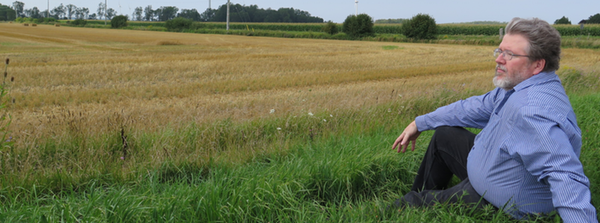
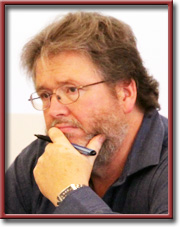
3 Comments
Anita Sullivan
Dear Will — Thanks for your eloquence and courage to dive into this monster of a subject. Somewhat hesitantly, I mention a book that might intrigue you, even though it’s truly “off the grid” by most standards. It’s ‘The Lost Art of Resurrection’ by Freddy Silva. He says resurrection is very common in religions all over the world, but only Christianity puts it after death — everyone else knows it comes before!
Elizabeth Boleman-Herring
Anita, your AND Will’s fearlessness is why I call you “my two writers who climb without ropes.” Now, I, too, have another book to read! I’m working my way through your list….. Love to both of you, up there on the heights. EB-H
William Ramp
Anita — thank you for the book ref.! Googling…
On where to place resurrection — yes, Christianity traditionally put a strong emphasis on bodily resurrection *following* physical death, and for an interesting reason: there is something very materialist about that emphasis. It harks back to the Genesis story in which God created various aspects of physical reality and “saw that they were good.” So the notion became that redemption had to take the form of physical resurrection: if you will, a reconciling of both the material and the spiritual universe, body and soul, with God and with each other. That being said, though, the notion of death can also be interpreted (in both Christian and non-Christian traditions) as something that can occur *during* our physical lives, not after, and resurrection also. Some mystics would say, “Daily.”
On another note, both you and Elizabeth might be amused that I’ve finally succumbed to the recruiting efforts of a local theology reading group this fall. Meets every couple of weeks with a sumptuous potluck. It (the group rather than the meal!) is composed of students, faculty, and members of the local community. Among them, over the years, have been several convinced atheists (who, with the agnostics, can outnumber the religious) an Anglican priest, a secular Jewish philosopher who challenges both secularity and religion with equal relish, members of the Eastern religions, a freethinking Mormon or two, and even an occasional intrigued fundamentalist. In short, members of any religious or political (or aesthetic or sexual) persuasion, or none.
But they have one requirement I may be unable to meet. In the Christmas season, they (including the atheists) have been known to go door-to-door, carolling lustily. This may be too much for me, though I am given to understand mulled wine or a flask of scotch might help.